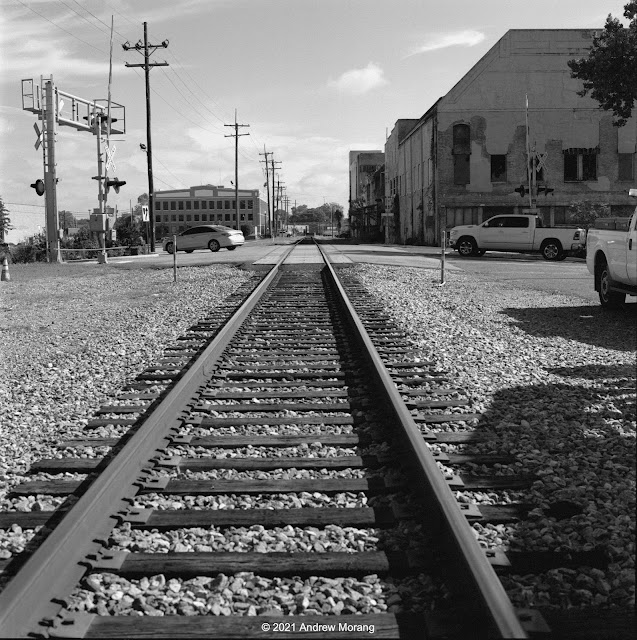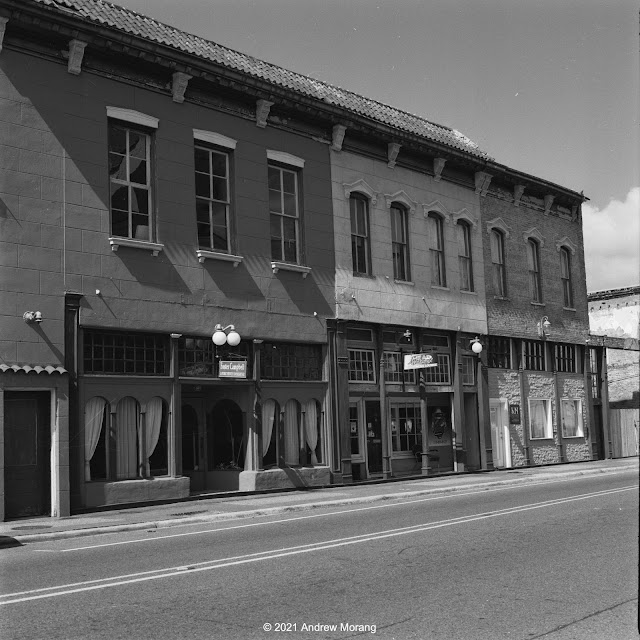
For decades, drivers on Highway 61 (the Blues Highway) had to cross the Yazoo River at Redwood, Mississippi, on a handsome 1950-vintage steel cantilever bridge. Unfortunately, I do not have a photograph of the old bridge when intact. The old bridge was elegant in a mid-20th century industrial style, but no longer suited contemporary transportation needs. The two lanes were narrower than current standards, the bridge required expensive painting, and clearance was too low for some tall trucks. Therefore, Mississippi Department of Transport (MDOT) built a modern concrete 4-lane bridge over the Yazoo a short distance south of the old structure. Rather than disassemble the old bridge, it was dropped in place using explosives on July 1, 2009. According to WJTV television, "The bridge was blown up at 7:50 a.m. and the blast was fueled by packets of explosives placed at strategic points by contractor Key Constructors. Boats on the Yazoo were halted as crews cleared the waterway." I missed the demolition because it was not announced to the public beforehand, but I drove to the site a few days later.

This photograph shows the east approach with some of the structure still standing.

This is the center span lying in the river. It must have taken several days to remove the debris, during which barge traffic would have been blocked. The Yazoo is a Federal navigation project, but commercial tonnage is low and the channel is seldom dredged.
A short distance to the south, out of sight of the highway bridge, is this abandoned railroad swing bridge. It has been unused since at least the 1980s. A few years ago, I read that these types of bridges were slowly disappearing from the US landscape, but one is still here.
The tracks and ties were removed a long time ago from the west side of the bridge. This is an example of the immense engineering infrastructure built by the railroads in the early 20th century. For many years, the best and brightest engineering students went to work for railroads because they offered the most challenging careers.
Finally, a slightly off-topic photograph. This is the auditorium of the Radwood elementary school on May 7, 2011, when the Mississippi and Yazoo Rivers were at record flood levels. The school built temporary levees to keep out the water, and books, furniture, and other materials were moved to the auditorium, which was a bit higher than the other rooms. Fortunately, the flood waters did not reach the building and no equipment was damaged.
As a final example of bridges and railroad engineering, here is a monumental lift bridge on the Cuyahoga River, in Cleveland, Ohio. I have never seen this bridge in use, and it is rusting and deteriorating. But look at its massive construction. I hope it will preserved as a mechanical or civil engineering monument. Also, look to the lower left and you can see a swing bridge similar to the one at Redwood.
Most photographs taken with an Olympus E-330 digital camera. The two sepia frames are from a Sony DSC-W7 compact camera.












































